9 Nights / 10 Days
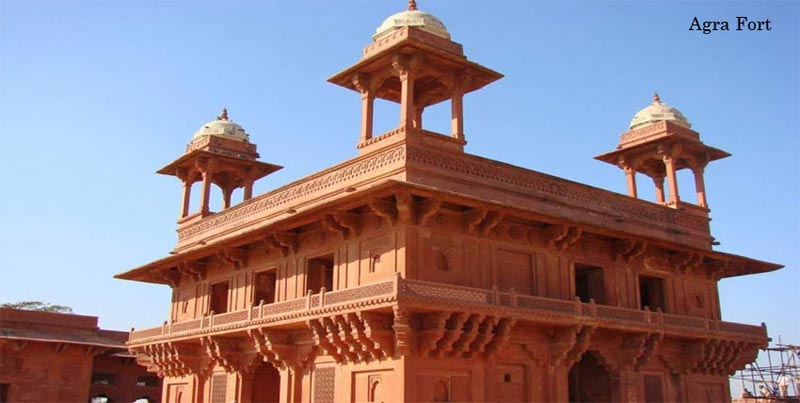
Delhi also known as the National Capital Territory of India is the capital of India. Delhi was the site of ancient Indraprastha (Khandavprastha), the ancient capital of the Pandavas during the Mahabharata. In AD 1639, the Mughal emperor Shah Jahan built a new walled city named Shahjahanabad, in Delhi, which served as the capital of the Mughal Empire from 1649 until the Rebellion of 1857.Shahjahanabad today is Old Delhi. The greater part of Old Delhi is still confined within the space of Shah Jahans walls, and several gates built during his rule—the Kashmiri Gate, the Delhi Gate, the Turkman Gate, and the Ajmeri Gate—still stand. In 1911 the British determined to shift the capital of India from Calcutta (Kolkata) to Delhi, and a three-member committee was formed to plan the construction of the new administrative centre.
The key architect on the committee was Sir Edwin Lutyens; it was he who gave shape to the city. The British moved to the partially built New Delhi in 1912, and construction was completed in 1931. A new capital city, New Delhi, was built to the south of the old city during the 1920s. When the British left India in 1947, New Delhi became its national capital and seat of the union government.Delhi's culture has been influenced by its lengthy history and historic association as the capital of India. This is exemplified by many significant monuments in the city, the Mughals and the Turkic rulers constructed several architecturally significant buildings, such as the Jama Masjid – India's largest mosque and the Red Fort. Three World Heritage Sites – the Red Fort, Qutub Minar and Humayun's Tomb – are located in Delhi. Other monuments include the India Gate, is a war memorial located on the eastern edge of the ‘ceremonial axis’ of New Delhi. the Jantar Mantar – an 18th-century astronomical observatory – and the Purana Qila – a 16th-century fortress.
The Laxminarayan temple, Akshardham temple, the Bahai Lotus temple and the ISKCON temple are examples of modern architecture. Raj Ghat and associated memorials houses memorials of Mahatma Gandhi and other notable personalities. Several government buildings and official residences reminiscent of British colonial architecture, including the Rashtrapati Bhavan, the Secretariat, Rajpath, the Parliament of India and Vijay Chowk. Safdarjung's Tomb is an example of the Mughal gardens style. Chandni Chowk, a 17th-century market, is one of the most popular shopping areas in Delhi for jewellery and Zari saris. Delhi's arts and crafts include, Zardozi – embroidery done with gold thread and Meenakari – the art of enamelling.
Places Of Interest :- Qutub Minar, Red Fort, India Gate, Lotus Temple, Connaught Place, Birla Mandir, Jantar Mantar, Akshardham Temple, Iskon Temple etc.
Agra :- Agra is a city on the banks of the river Yamuna in the northern state of Uttar Pradesh, India. It is a major tourist destination because of its many splendid Mughal-era buildings, most notably the Taj Mahal, Agra Fort . The city is mentioned in the epic Mahabharata, where it was called AgrevaM51;a ("the border of the forest"). Legend ascribes the founding of the city to Raja Badal Singh, a Sikarwar Rajput king (c. 1475), who’s fort, Badalgarh, stood on or near the site of the present fort. However, the 11th century Persian poet Mas'ud Sa'd Salman writes of a desperate assault on the fortress of Agra, and then held by the Shahi King Jayapala, by Sultan Mahmud of Ghazni. Sultan Sikandar Lodi was the first to move his capital from Delhi to Agra in 1506. He died in 1517 and his son, Ibrahim Lodi, remained in power there for nine more years, finally being defeated at the Battle of Panipat in 1526. Between 1540 and 1556, Afghans, beginning with Sher Shah Suri ruled the area. It achieved fame as the capital of the Mughal Empire from 1556 to 1658.
It is generally accepted that Sultan i, the Ruler of the Delhi Sultanate founded Agra in the year 1504. After the Sultan's death the city passed on to his son Sultan Ibrahim Lodi. He ruled his Sultanate from Agra until he fell fighting to Babar in the First battle of Panipat fought in 1526. The golden age of the city began with the Mughals. It was known then as Akbarabad and remained the capital of the Empire under the Emperors Akbar, Jahangir and Shah Jahan. Shah Jahan later shifted his capital to Shahjahanabad in the year 1689. Since Akbarabad was one of the most important cities in India under the Mughals, it witnessed a lot of building activity. Babar, the founder of the Mughal dynasty, laid out the first formal Persian garden on the banks of river Yamuna. The garden is called the Aram Bagh or the Garden of Relaxation. His grandson Akbar raised the towering ramparts of the Great Red Fort, besides making Agra a centre for learning, arts, commerce and religion. Akbar also built a new city on the outskirts of Akbarabad called Fatehpur Sikri. This city was built in the form of a Mughal military camp in stone.
The Taj Mahal is one of the most famous buildings in the world, the mausoleum of Shah Jahan's favourite wife, Mumtaz Mahal. It is one of the New Seven Wonders of the world, and one of the three World Heritage Sites in Agra. Completed in 1653, the Taj Mahal was built by the Mughal king Shah Jahan as the final resting place for his beloved wife, Mumtaz Mahal. Finished in marble, it is perhaps India's most beautiful monument. This perfectly symmetrical monument took 22 years (1630–1652) of labour and 20,000 workers, masons and jewellers to build and is set amidst landscaped gardens. Built by the Persian architect, Ustad 'Isa, the Taj Mahal is on the south bank of the Yamuna River. It is an acknowledged masterpiece of symmetry. Verses of the Koran are inscribed on it and at the top of the gate are twenty-two small domes, signifying the number of years the monument took to build. The Taj Mahal was built on a marble platform that stands above a sandstone one.
The most elegant dome of the Taj Mahal has a diameter of 60 feet (18 m), and rises to a height of 80 feet (24 m); directly under this dome is the tomb of Mumtaz Mahal. Shah Jahan's tomb was erected next to hers by his son Aurangzeb. The interiors are decorated with fine inlay work, incorporating semi-precious stones. Agra Fort (sometimes called the Red Fort), was commissioned by the great Mughal Emperor Akbar in 1565, and is another of Agra's World Heritage Sites. A stone tablet at the gate of the Fort states that it had been built before 1000 but was later renovated by Akbar. The red sandstone fort was converted into a palace during Shah Jahan's time, and reworked extensively, Notable buildings in the fort include the Pearl Mosque or Moti Masjid, the Diwan-e-Aam and Diwan-e-Khas (halls of public and private audience),Jahangir's Palace, Khas Mahal, Shish Mahal (mirrored palace), and the Musamman Burj. The fort is a typical example of Mughal architecture, effectively showing how the North Indian style of fort construction differed from that of the South. In the South, the majority of forts were built on the seabed like the one at Bekal in Kerala.
Places Of Interest :- Taj Mahal, Agra Fort, Sikandra etc.
Jaipur :- Jaipur is the famous city and capital of Rajasthan. Jaipur is known as the Pink City of India because of the colour used exclusively in the walled city.The capital of Rajasthan, Jaipur is rich in history and culture. Here the past comes alive in magnificent forts and palaces. The bustling bazaars of Jaipur, famous for jewellery, fabric and shoes, possess a timeless quality and are surely a treasure-trove for the shoppers. This fascinating city with its romantic charm takes you to an epoch of royalty and tradition. Rajasthan's beautiful Pink City Jaipur, three hill forts and series of palaces in the city are important attractions.
Places Of Interest :- Hawa Mahal, Galta Monkey Temple, Amber Fort and Palace, Nahargarh Fort, Jantar Mantar, Government Central (Albert Hall) Museum, Kanak Vrindavan Valley, Sisodia Rani Ka Bagh, Vidyadhar Garden.
Katra Vaishno Devi :- Katra or Katra Vaishno Devi, as it is popularly known, is a small town in Reasi district of the Indian state of Jammu and Kashmir situated in the foothills of the Trikuta Mountains, where the holy shrine of Vaishno Devi is located. It is located 42 km from the city of Jammu.
Shri Mata Vaishno Devi University, one of the leading technical universities of India, is also located here. Katra serves as the base camp for pilgrims who visit Vaishno Devi. The number of pilgrims that visit the shrine every year has increased from 1.4 million in 1986 to 8.2 million in 2009. Over the years, a lot has changed, but one should not miss the opportunity to walk through the main bazaar (market) for buying (do not forget/hesitate to negotiate a bit) souvenirs, dry fruits, woollen garments, hosiery, leather jackets, etc.To reach Vaishno Devi temple the pilgrims have to register at the Katra before starting the trek.
By registering, the pilgrims get accident insurance while on the trek for 1 Lakh INR. It is a trek of 14 km.There is another trek (1.5 km) from Vaishno Devi temple for Baba Bhaironnath. It is said that the pilgrimage is not complete until you visit this temple at last. The scenery throughout the trek is picturesque. Environment-friendly auto rickshaws and helicopter services have started, to make the journey a pleasant one.
Places Of Interest :- Katra: Bhumika Devi Mandir, Nau Devi Mandir, Baba Dhansar, etc.Medical & Travel insurance.
Personal expenses are not included in the package.
Supplement will be applicable for Single occupancy.
X-Mas & New Year supplements will be charged extra.
All the meals not listed in Inclusions i.e. during journey.
Additional costs due to flight cancellation, road blocks etc.
Any Airfare / International flight ticket or Government Service tax.
Anything not specifically mentioned under the head “Prices included”.
Camera Charges / Jeep Safari / Camel Safari / Elephant Ride Charges.
Air condition vehicle, any other expenses / service not mentioned in the inclusions.
Any extra expenses due to delays arising from bad weather and unforeseen circumstances.
Any monument entrance fee/activity charges/adventure sport charges / Gaming charges, Jungle Safari etc. (if applicable).
Any items/services which are personal in nature like toiletries, sun protection creams, chips, soft drinks, laundry, STD calls, etc.
On arrival at Airport / Railway station, meet our representative and proceed to Hotel for Check in. Delhi is a city built and re-built seven times over several centuries. The capital city today marries the quaint and unique elements of different historical eras with the pace of the bustling, growing economy. At every turn of the road, the past and the present coexist. Later proceed for city Tour of NEW DELHI - drive past the stately government buildings of the British Era designed by Lutyen’s, including the Presidential Palace. Overnight at Hotel.
After Breakfast proceed for full day sightseeing, the Red Fort, Chandni Chowk Bazaar and Khari Baoli spice market on your way to visit Jama Masjid. One of the largest mosques in the world and the largest in India, it was built by Shah Jahan to dominate the city. Then, make your way to Raj Ghat, a memorial built to commemorate the site of Mahatma Gandhi’s cremation. Also visit Old Fort. Overnight at hotel.
After breakfast drive to Agra. Arrive and check in at Hotel. Akbarabad, as Agra was known during the Mughal era, is home to some of the most magnificent Mughal architectures. Situated on the banks of river Yamuna, the monumental beauty of Agra has inspired countless people around the world. This third largest city of the state of Uttar Pradesh is home to three UNESCO world heritage sites. Later Proceed to Visit to the world - famous Taj Mahal - or literally "Crown of Palaces" was built by Shah Jehan to immortalize the memory of his beloved wife Mumtaz Mahal who died tragically in 1631. After that visit, the Red Fort built by three generations of Mughal Emperors between 1565 and 1573. It housed both the presidential Palaces of the Royal family, and the military quarters. Overnight at Hotel.
After breakfast drive to Jaipur En-route Fatehpur Sikri - the extraordinary city built by Akbar the Great, deserted 14 years later, but which, during its brief span, exceeded London in both grandeur and population. After visit continue drive to Jaipur. Arrive & Check in to the hotel. Jaipur: Beautiful palaces, forts and colourful bazaars speak of the pink city’s glorious regal past. Modernity walks hand-in-hand with history in Jaipur. This largest city of Rajasthan, founded by Maharaja Sawai Jai Singh, is famous for its magnanimous hospitality. Evening explore colorful local market. Overnight at Hotel.
After Breakfast, Visit Amber - the ancient capital of the Rajput Empire reaching the fort on elephant back. It is a deserted palace surrounded by majestic ramparts & the magnificent public & private room's evidence the splendor of the rulers of 16th & 17th century Rajasthan. Also visit City Place, Janter Mantar and Hawa Mahal in evening leisure. Overnight at hotel.
After breakfast drive to Delhi, Arrival and check in hotel, later visit local market CP/Karol Bagh/Sarojni Nagar/ Khan Market. In the evening proceed for Delhi Railway Station. Overnight in train.
Arrival at Jammu Railway Station and Drive to Katra. Arrival at Katra, check in at hotel after breakfast and take 1-2 hrs rest start for Vaishnodevi climb (Total 13 kms walk to the temple that takes about 4-5 hours). Enroute stops at Adhkwari Temple and darshan at Baba Bhaironath Temple is recommended). During Summer and peak travel season it may be advisable to start the climb previous evening. Once queue tickets are purchased the wait period could be half an hour to 3 hours depending on the rush. During season Yatra Parchi (entry tickets required to beging the uphill walk), it is recommended to purchase in advance to avoid delays. Guests looking for Helidarshan (Helicopter ride, darshan and back), morning flights are recommeded for best weather and least uncertainity. Return by late evening. Overnight at hotel.
After breakfast drive from Katra to Shivkhori, Baba Dansar and Naudevi Darshan Back to Katra from Dinner. In evening take train for delhi. Overnight at train
After breakfast visit the UNESCO World Heritage-listed Qutub Minar, India’s tallest minaret, made of red sandstone and marble and inscribed with verses from the Qur’an. Next stop Lotus Temple completed in 1986. Notable for its flowerlike shape, it serves as the Mother Temple of the Indian subcontinent and has become a prominent attraction in the city also visit Iskon Temple a famous Krishana Temple. Stop next at Humayun’s Tomb, another UNESCO World Heritage site and tomb of a Mughal emperor dating back to the 1500s. Next, pass under the high stone archway of India Gate – constructed in the memory of Indian soldiers who died in World War I – and drive along Rajpath (King's Way), the ceremonial boulevard heading toward Rashtrapati Bhavan, official home to the President of India. Also visit Birla Temple a Lord Vishnu Temple. Overnight at hotel.
After breakfast proceed for onward journey.
| No of pax | Age Limit | Price per pax (Rs) |
|---|---|---|
| Adult | Above 12 years | 21200 / Adult |
We, a Grooming Travel Agency Arrange all Inbound Tours / Outbound Tours for Individual and Group Travellers with Tailor Made Itineraries, Corporate Conferences, Exibihitions & Incentives. We Visualize a Greater Role to Be Played in the Indian Tourism Industry - for Both Outbound and Inbound - Which with Successful Marketing & Sales, Ensures Total Quality Management and Customer Friendliness with Least Expenses. We Believe in Philosophy of Continuous Improvement of Processes Which Will Provide Maximum Satisfaction to Our Guest. and Keep Us Flexible in Dynamic Environment to Serve Them Better. We are Providing Various Range of Travel Products and Services, We Customise Diverse Leisure Trips and Holiday Packages that Go with the Taste and Requirements of Our Guests. We Understand the Worth of Hard Earned Money and Wish to Give You Best Possible Results On Each of the Package. At Bariza We are Committed to Make Your Holidays Unforgettable, So that You Can Experience the Beauty and Uniqueness of Our Wonderful Planet.
our Aim is to Encourage the Beauty and Values of Offbeat Unexplored Places of India to all Our Clients. Places Which are Very Rich in Nature But Not Famous and Known and Not Even Crowded, People Should Go There to Relax and Rejuvenate Their Body and Soul. They Can Be Get Close to Their Nearest and Can Spend Valuable Moments Far from Crowded and Busy Hill Stations. Our Innovative Range of Holiday Packages Make Sure that Every Holiday is Packed with Unparalleled Fun and Exclusivity, Blanketed with "quality" to Craft Extraordinary Moments Especially for You. We Want to Make Your Holiday a Real Holiday in Heavenly Valleys / Rivers and Hills to Recharge Your Energy When You Back to Home After Holidays with Bariza.
we Manage & Fulfil Your Travel Requirements Efficiently with the Help of Our Travel Experts At Reduced Travel Expenses. Our Main Aspiration is to Provide the Clients Economical & Perfect Corporate Travel Solutions By Optimizing Your Travel Budget. Read More...
21,200 PP

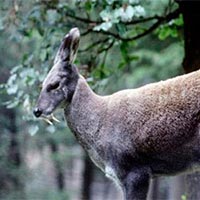 5D/4N
5D/4N
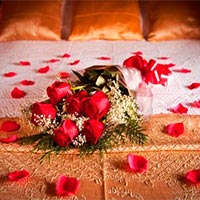 3D/2N
3D/2N
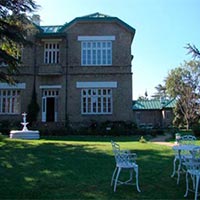 5D/4N
5D/4N
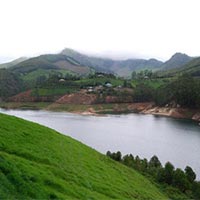 6D/5N
6D/5N
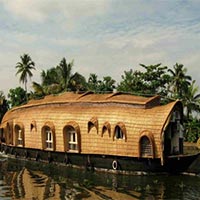 6D/5N
6D/5N
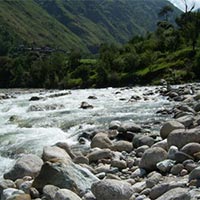 4D/3N
4D/3N
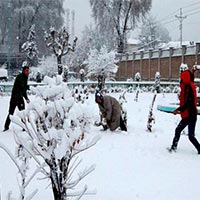 5D/4N
5D/4N
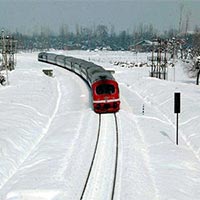 5D/4N
5D/4N
 6D/5N
6D/5N
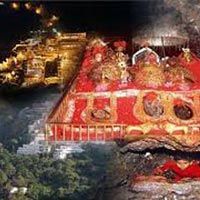 10D/9N
10D/9N
Srinagar - Anantnag - Patnitop - Jammu - Baramulla
 10D/9N
10D/9N
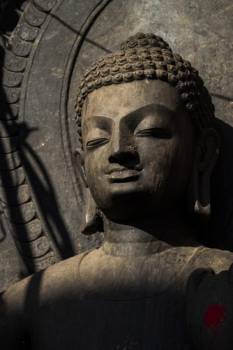 10D/9N
10D/9N
New Delhi - Varanasi - Bodhgaya - Rajgir - Nalanda - Patna - Vaishali - Kushinagar ..
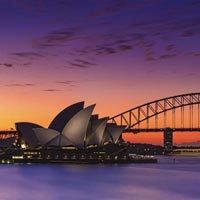 10D/9N
10D/9N
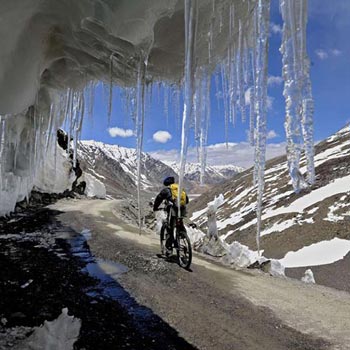 10D/9N
10D/9N
Kinnaur - Kaza - Spiti Romantic Package
Chandigarh City - Shimla - Kinnaur - Kaza - Digboi
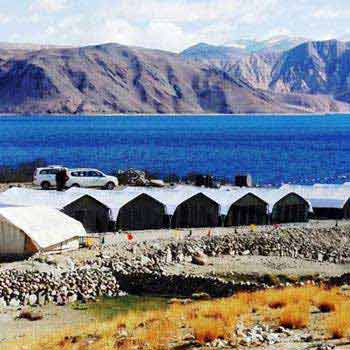 10D/9N
10D/9N
 10D/9N
10D/9N
South India - Kerala & Tamil nadu- 9 N/1..
Kovalam - Munnar - Alleppey - Madurai - Kochi - Kumarakom Thekkady
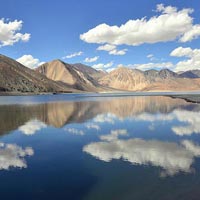 10D/9N
10D/9N
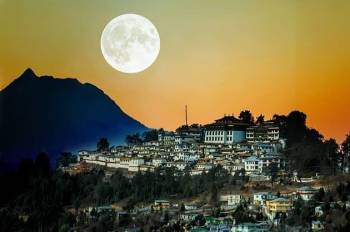 10D/9N
10D/9N
Tawang Kaziranga Shillong Tour
Guwahati - Shillong - Tawang - Kaziranga - Cherrapunji
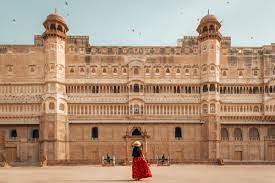 13D/12N
13D/12N
Rajasthan Tour Package 12 Night - 13 Days
Ajmer - Bikaner - Jaipur - Jaisalmer - Jodhpur - Mount Abu - Pushkar - Udaipur
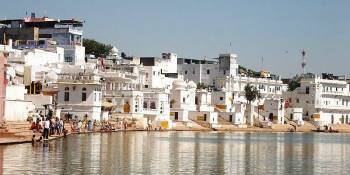 13D/12N
13D/12N
12 Nights Rajasthan Package From Jaipur
Ajmer - Bikaner - Jaipur - Jaisalmer - Jodhpur - Mount Abu - Pushkar - Udaipur
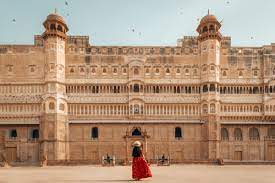 13D/12N
13D/12N
Rajasthan Tour Package 12 Night - 13 Days
Ajmer - Bikaner - Jaipur - Jaisalmer - Jodhpur - Mount Abu - Pushkar - Udaipur
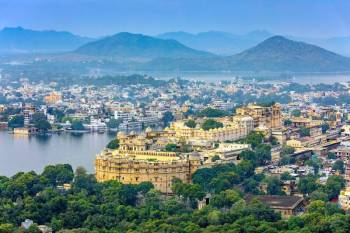 12D/11N
12D/11N
11 Nights 12 Days - Delhi Agra Rajasthan
New Delhi - Mathura - Agra - Jaipur - Ajmer - Pushkar - Udaipur - Mount Abu - Ranak..
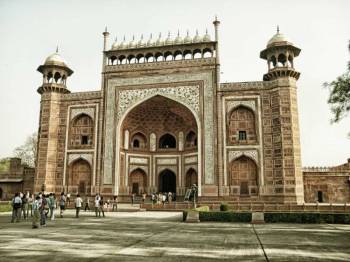 11D/10N
11D/10N
10 Nights Uttar Pradesh Tour Package Fro..
New Delhi - Agra - Prayagraj - Lucknow - Mathura - Varanasi - Ayodhya - Vrindavan -..
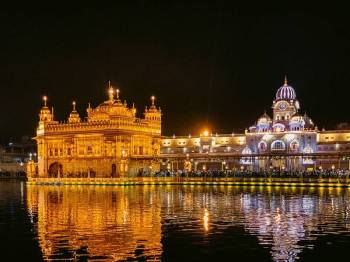 10D/9N
10D/9N
9 Night 10 Days Jammu And Kashmir With V..
Jammu - Katra - Patnitop - Srinagar - Amritsar - Pahalgam - Sonamarg - Gulmarg
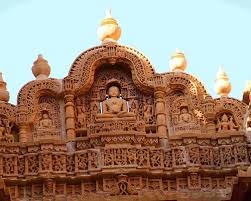 10D/9N
10D/9N
9 Night - 10 Days Rajasthan Tour Package
Ajmer - Jaipur - Jaisalmer - Jodhpur - Mount Abu - Udaipur
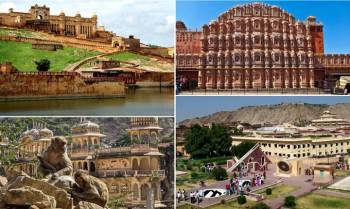 10D/9N
10D/9N
Ajmer - Udaipur - Mount Abu - Jodhpur - ..
Ajmer - Jaisalmer - Jodhpur - Mount Abu - Udaipur - Jaipur
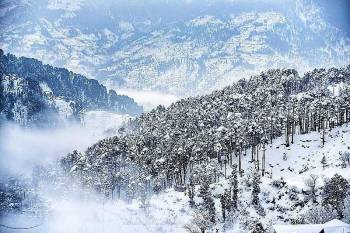 10D/9N
10D/9N
Jammu And Kashmir Tour Package 9 Night -..
Jammu - Katra - Patnitop - Srinagar - Pahalgam - Sonamarg - Gulmarg